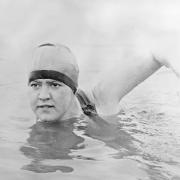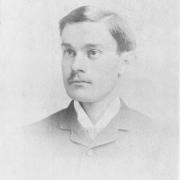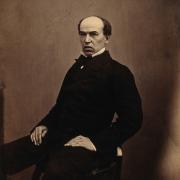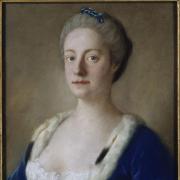Irascible, lonely and unlucky in love, Maidstone-born William Hazlitt at least had the consolations of a brilliant intellect, with his influential polemical essays - and a theatre named after him - his enduring legacy.
Life’s full of coincidences. My wife asked me for help with a crossword clue. The clue? ‘Writer’. The answer? ‘Essayist’. The coincidence? I’d started looking at this month’s Kent Great shortly before and he was an eminent essayist, the most brilliant of his time, philosopher and artist. Crosswords are good for the old noggin, incidentally.
William Hazlitt was born in Maidstone on April 10 1778, the son of an Irish-born Unitarian minister and author, William Hazlitt Senior, and Grace Loftus. Some of his childhood was spent in both his father’s homeland and the US, his fate to follow the itinerant preacher. Back in England, Hazlitt Jnr became moody and unapproachable, a trait characterising the rest of his life. He didn’t light up a room, never mind a party. He always had his head in a book, though, which is commendable.

Aged 15, the lad was sent to Hackney to study for the ministry, so following in father’s footsteps - except that, come 1798, he’d met Samuel Taylor Coleridge (1772-1834) and all notions of ministering went west. Aged 20-odd he was embarking on a rather more interesting career, no doubt inspired by his contact with the genius behind The Rime of the Ancient Mariner, who’d spend much of his life in a laudanum-induced fug. Coleridge, during his more lucid moments, encouraged Hazlitt to write Principles of Human Action (1805), doing posterity a favour in helping to reveal Hazlitt’s brilliant intellect.
Having dabbled with portrait painting (as you do), which included an arty trip to Paris in 1802, Hazlitt published Free Thoughts on Public Affairs in 1806, followed by Reply to Malthus (1807), with Thomas Malthus being the economist-cleric whose dystopian theories predicted that a society’s population growth would always outstrip its ability to support it. Hazlitt married Sarah Stoddart, sister of the then-editor of The Times, in 1808, a coupling that proved unsuccessful. Meanwhile, Hazlitt was skint by 1811, which can’t have amused his beloved, but having replied to Malthus, Hazlitt found gainful employ on London’s Advertiser and Morning Chronicle in 1812.
Between 1814 and 1830 Hazlitt was active with the Edinburgh Review, while his Round Table essays and Characters of Shakespeare’s Plays were published in 1817. He also found another bowstring as a lecturer, expounding on topics including English Comic Writers (which sounds a hoot), and Dramatic Literature of the Age of Elizabeth (less so). Essays he’d published in The London Magazine were republished in his Table Talk (1821). William’s career may have been prospering but his marriage ended; divorced in 1822. Apparently Hazlitt had done something unbefitting of a gentleman: had a fling with a maid. Republishing of his essays for the The London Magazine continued, however, this time in Plain Speaker (1826). Having material republished sounds like money for old rope; nice work if you can get it.

Hazlitt was unlucky in love. He developed a passion for Sarah Walker, the daughter of a tailor with whom he lodged, embarking on a disastrous affair, then venting his frustration in Liber Amoris (Book of Love), which came out in 1823. Hazlitt finally seemed to have struck lucky in 1824, when he wed a delightful widow, a Ms Isabella Bridgwater, who brought £300 a year to the party and travelled with him to Italy. Ah, Liber Amoris: She walked out on him on the return journey, never to return. Apparently, Hazlitt’s son - another William - resented his new stepmother, a factor that played its part in the relationship's rapid demise.
The unlucky but resourceful Hazlitt stuck to his knitting, churning out his ‘Spirit of the Age’ or ‘Contemporary Portraits’ in 1825, then in a departure from his norm, a ‘Life of Napoleon Bonaparte’ (1828-30). What sort of a writer was he? Well, Hazlitt was a ‘deadly controversialist’, someone who consciously courted controversy. There are many modern columnists doing exactly the same, happily winding people up. As early as 1817 Hazlitt had ignited several quarrels with his mates and others, all the result of his outspoken views forcibly expressed in print. It's no wonder he was lonely.
He was also a ‘master of epigram’, writing in a cleverly witty way. There was invective, too, where he laid into something or someone, taking no hostages, and he’d also perfected ‘withering irony’ where one’s words belie their true meaning, as in: ‘If he had half a brain he’d be dangerous’. Stylistically he ranged from ‘lively gossip’ to ‘glowing rhapsody’, the latter implying an emotional extravagance that took a bit of getting used to.

Sadly, the closing years of Hazlitt’s life were blighted by ill-health and pecuniary woes. He died in poverty on September 18 1830, his final words being: ‘Well, I’ve had a happy life’. Can any of us ask for more? He was laid to rest at St Anne’s, Soho, his gravestone bearing a long-winded epitaph. I’ll resist the temptation to quote in full, however, some of it sheds further light on the kind of man he was: ‘Grateful and contented’ (echoing his last words); ‘a despiser of the merely rich and great, a lover of the people, poor or oppressed, a hater of the pride and power of the few, as opposed to the happiness of the many. A man of true moral courage, who sacrificed profit and present fame to principle (ah, those pecuniary woes). I like Hazlitt.
Hazlitt’s life was sufficiently interesting to attract biographers and compilers including his own grandson, William Carew, who collated and edited many of his works. His writing also inspired the likes of Dickens, Thackeray and Robert Louis Stevenson. Although he was brilliant and controversial, Hazlitt was largely forgotten until recently, his tirades against abuses of power now curiously back in vogue. His self-portrait and his painting of his father are both in the possession of Maidstone Museum and Art Gallery, and of course the theatre in our county town bears his name.



























